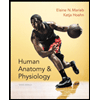
Victoria is a 60-year-old woman who weighs 200 pounds and is 5 feet 5 inches tall. She has been recently diagnosed with type 2 diabetes. Her physician states it is necessary for her to lose weight and sends her to see Lauren, the health maintenance organization (HMO) nutritionist. Lauren first discusses with Victoria what makes up a balanced diet. In addition, Lauren will help Victoria determine her BMR and her caloric needs to reach and maintain a healthy weight. Explain the term “Recommended Dietary Allowances.”
Consuming fast food on a regular basis can direct to a high risk of obesity and incurable diseases like cardiovascular disease, type 2 diabetes, non-alcoholic fatty liver disease and cancers. We know Australian's consume too much junk food. 35% of grown-ups' daily energy input comes from junk food.
Recommended Dietary Allowance (RDA): Average daily level of intake enough to fulfil the nutrient necessities of approximately all (96%-98%) healthy people. Sufficient Intake: organized when the proof is inadequate to develop an RDA and is fixed at a level presumed to assure nutritional sufficiency.
Trending nowThis is a popular solution!
Step by stepSolved in 3 steps

- An obese patient comes to the clinic complaining of swollen feet and ankles, fatigue, shortness of breath, and often feeling “spaced out.” She is a cashier in a grocery store, a job that requires her to stand all day. Outside of work, she engages in no physical activity. She confesses that, because of her weight, she finds even walking uncomfortable. Explain how the skeletal muscle pump might play a role in this patient’s signs and symptoms.An obese patient comes to the clinic complaining of swollen feet and ankles, fatigue, shortness of breath, and often feeling “spaced out.” She is a cashier in a grocery store, a job that requires her to stand all day. Outside of work, she engages in no physical activity. She confesses that, because of her weight, she finds even walking uncomfortable. Explain how the skeletal muscle pump might play a role in this patient’s signs and symptoms.arrow_forwardjohn is passing lots of urine and thirsty and recovering from a flu and has no energy to play sports.GP checks his blood glucose which is 15.8 and ketones 2.5 Part 1 identify what type of diabetes is consistent with john's sympyoms and clinical features.Explain your rationale and the investigations and clinical assessments that should be performed to confirm the diagnosis and type of diabetes for him including when how and why these are perfomed. Part2 Describe the pathophysiology of diabetes in relation to the clinical presentation of john's diabetes.Explain the metabolic abnormalities observed in johns case study in contrast to normal carbohydrate fat and protein metabolism.arrow_forwardMary, who has type 2 diabetes, has asked you about the importance of glycaemic index (GI) in her glucose control. Based on your knowledge, you inform her: a) That choosing low GI carbohydrate sources over high GI sources will not have any beneficial impact on her glucose control b) That choosing low GI carbohydrate sources over high GI sources might help to "fine-tune" glucose levels when considered along with total carbohydrate intake c) To choose carbohydrate sources containing higher levels of amylopectin starch, as it gets digested slower than amylose starch d) That she should choose glucose sources (e.g. white rice) over fructose sources (e.g. fruits), as glucose will produce a lower glycaemic response than will fructosearrow_forward
- With a brief explanation that explains the mechanism of obesity (Endocrine/GI) and the underlying organ system dysfunctions?arrow_forwardJeff is a 57-year-old male with a long history of type 1 diabetes. He takes insulin to manage his diabetes, but he has been having trouble maintaining steady blood glucose levels over the last two weeks. Jeff suffered a week-long case of influenza last month but is otherwise healthy. This morning, he began vomiting upon waking. This was followed by extreme abdominal pain and extreme thirst. He called his endocrinologist, who told him that he needs to seek emergency care. Treatment for Jeff’s acidic condition may include all of the following EXCEPT: Fluid replacement Insulin Dietary water restriction Sodium bicarbonate solutionarrow_forwarduanita, a 42-year-old woman with no significant medical history, has just finished her annual medical appointment. Her doctor told her that her hemoglobin A1c is slightly elevated, putting her in the range for prediabetes. Her doctor said if she loses 5-10% of her current weight and makes better food choices, her A1c should go down and this will decrease her risk of developing type 2 diabetes in the future. Juanita stops by your office (an assistant nutrition educator) to get more information. What questions would you ask Juanita before providing any guidance? Please ask three or more questions that are not answered in the prompt above. Make up Juanita's answers to these questions in full sentences, just like a real conversation. Based on this week's readings and Juanita's answers to your questions, describe at least three key components to healthy weight loss that Juanita will be able to implement immediately. This section should be in paragraph format.arrow_forward
- Joe is a 12 year old male patient who is brought to the emergency department for lethargy, nausea, and vomiting. It is noted that his breath has a fruity odor to it and that he is sweating profusely. A glucometer in the emergency department finds his blood glucose to be 523 mg/dL. It is determined that Joe is in Diabetic Ketoacidosis.arrow_forwardA patient diagnosed with type 2 diabetes mellitus is admitted to the medical unit with pneumonia. The patient's oral antidiabetic medication has been discontinued and the patient is now receiving insulin for glucose control. Which of the following statements best explains the rationale for this change in medication? acute illness like pneumonia will cause increased insulin resistance b. stress-related states such as infections increase risk of hyperglycaemia c. insulin administration will help prevent hypoglycaemia during the illness d. infection has compromised beta cell function so the patient will need insulin from now onarrow_forward(a) Choose one water-soluble and one fat-soluble vitamin. Draw their structures. Give a reference daily intake for each, in milligrams or micrograms. Give at least one metabolic role for each. List the condition caused by a deficiency of each, or describe the effects of a deficiency of each. Give a good dietary source of each. (b) Choose onearrow_forward
- Jeff is a 57-year-old male with a long history of type 1 diabetes. He takes insulin to manage his diabetes, but he has been having trouble maintaining steady blood glucose levels over the last two weeks. Jeff suffered a week-long case of influenza last month but is otherwise healthy. This morning, he began vomiting upon waking. This was followed by extreme abdominal pain and extreme thirst. He called his endocrinologist, who told him that he needs to seek emergency care.Kidney failure, cardiac arrest, and cerebral edema are all possible complications if Jeff’s condition is not treated. True Falsearrow_forwardIs there evidence that genes may become expressed that contribute to obesity? (with citation).arrow_forwardAnn is a 64-year-old diabetic who recently experienced the death of her mother. Now she is caring for her father, who is demanding and becoming confused. To complicate matters, Ann must care for her own teenage children and is working full time. For several weeks, Ann has noticed an increase in her blood sugar levels when she tests her late afternoon glucose. Explain why this is happening to Ann.arrow_forward
 Human Anatomy & Physiology (11th Edition)Anatomy and PhysiologyISBN:9780134580999Author:Elaine N. Marieb, Katja N. HoehnPublisher:PEARSON
Human Anatomy & Physiology (11th Edition)Anatomy and PhysiologyISBN:9780134580999Author:Elaine N. Marieb, Katja N. HoehnPublisher:PEARSON Anatomy & PhysiologyAnatomy and PhysiologyISBN:9781259398629Author:McKinley, Michael P., O'loughlin, Valerie Dean, Bidle, Theresa StouterPublisher:Mcgraw Hill Education,
Anatomy & PhysiologyAnatomy and PhysiologyISBN:9781259398629Author:McKinley, Michael P., O'loughlin, Valerie Dean, Bidle, Theresa StouterPublisher:Mcgraw Hill Education, Human AnatomyAnatomy and PhysiologyISBN:9780135168059Author:Marieb, Elaine Nicpon, Brady, Patricia, Mallatt, JonPublisher:Pearson Education, Inc.,
Human AnatomyAnatomy and PhysiologyISBN:9780135168059Author:Marieb, Elaine Nicpon, Brady, Patricia, Mallatt, JonPublisher:Pearson Education, Inc., Anatomy & Physiology: An Integrative ApproachAnatomy and PhysiologyISBN:9780078024283Author:Michael McKinley Dr., Valerie O'Loughlin, Theresa BidlePublisher:McGraw-Hill Education
Anatomy & Physiology: An Integrative ApproachAnatomy and PhysiologyISBN:9780078024283Author:Michael McKinley Dr., Valerie O'Loughlin, Theresa BidlePublisher:McGraw-Hill Education Human Anatomy & Physiology (Marieb, Human Anatomy...Anatomy and PhysiologyISBN:9780321927040Author:Elaine N. Marieb, Katja HoehnPublisher:PEARSON
Human Anatomy & Physiology (Marieb, Human Anatomy...Anatomy and PhysiologyISBN:9780321927040Author:Elaine N. Marieb, Katja HoehnPublisher:PEARSON




